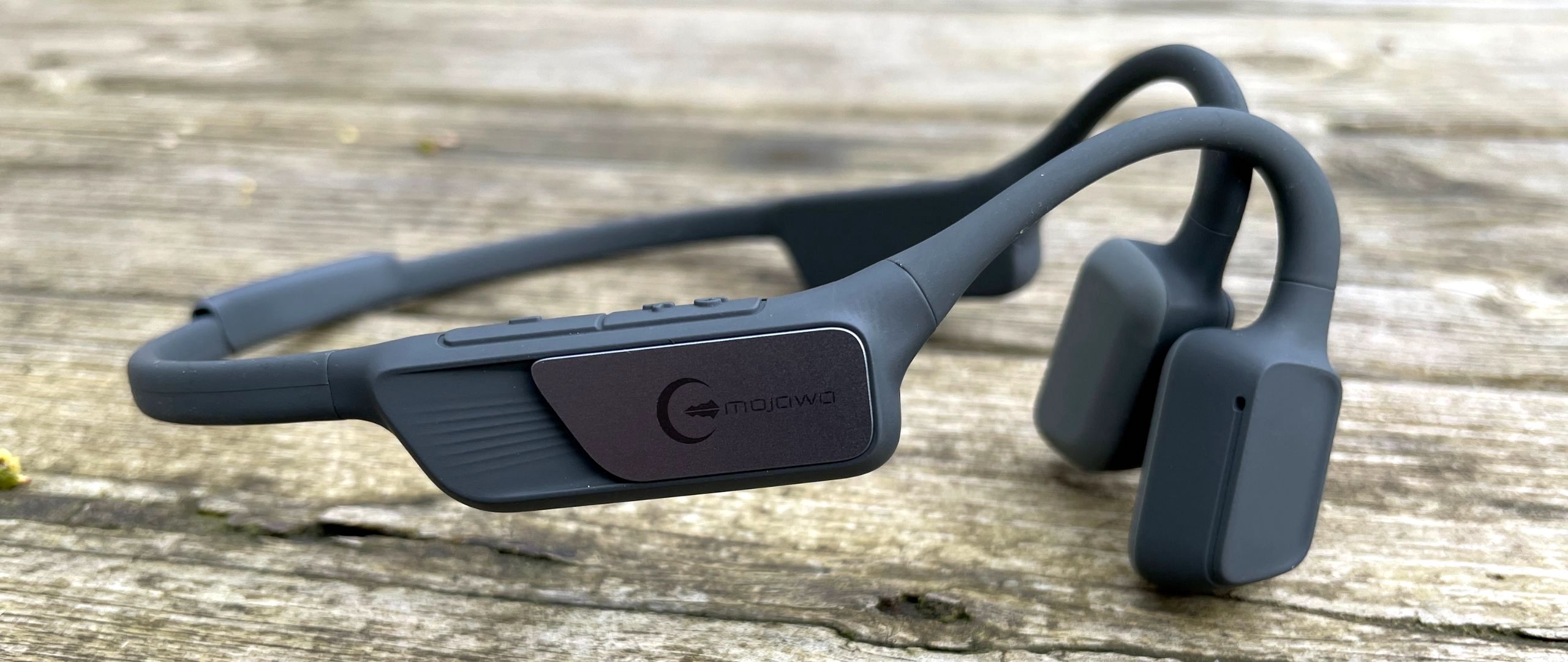TechRadar Verdict
Welcome to the second generation of bone conduction headsets, which retain the ‘stay aware’ functionality by sending audio directly to your ear through your bones without sacrificing bass. This effort from Mojawa includes an eight-hour battery and some handy reflective detailing, too.
Pros
- +
Good bass levels
- +
Weatherproof design
- +
Eight-hour battery life
- +
Reflective detailing on neckband
Cons
- -
Larger transducers than rivals
- -
Occasional vibration ‘tickle’
- -
Uses proprietary charging cable
- -
Weak magnet on charging cable
Why you can trust TechRadar
One-minute review
Many runners and cyclists think that in-ear headphones that physically sit in your ears are no good in urban areas. Not only are they so often uncomfortable, but they also prevent you hearing anything going on around you. That can be dangerous and it’s why many races now ban them; cue open-ear bone conduction headphones.
While regular earphones send sound straight to your eardrums, bone conduction products like the Mojo1 from Mowawa send low frequency sound to your inner ear using your jawbones.
Crucially, they do that using transducers that sit beside your ear, but not inside them. As well as being able to hear cars, people and animals when you go out for a run they’re more comfortable and much easier to clean.
Most importantly from a sales point of view, the bone conduction concept has been successfully popularised bv AfterShockz – now renamed Shokz – in its latest Shokz OpenRun and Shokz OpenRun Pro products. Until now there haven’t been many rivals. So how does the Mojo1 compare to the market leading brands’ products?
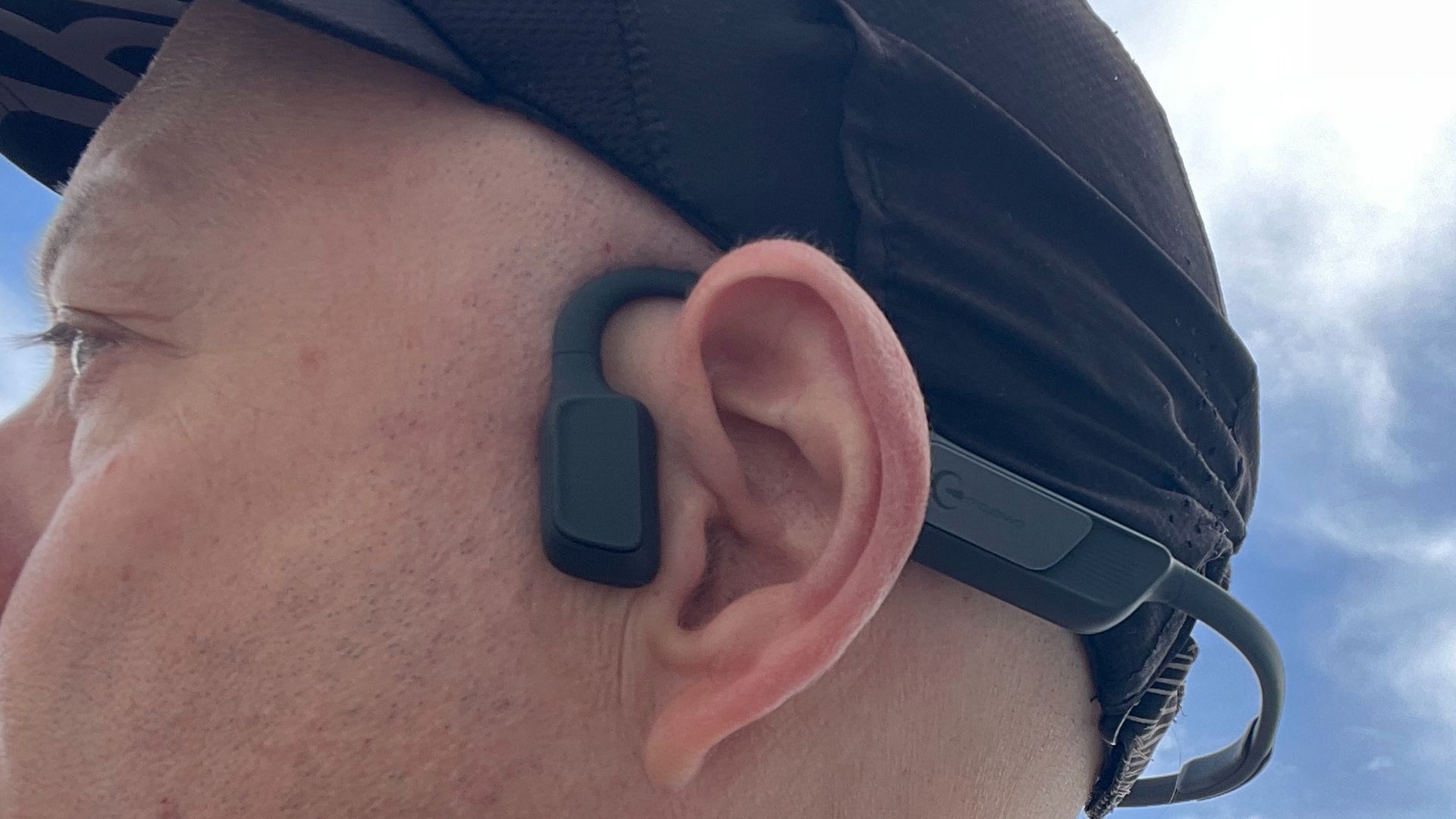
It’s basically a same-price rival to the Shokz OpenRun Pro, with similarly larger transducers for more bass, but also some noticeable vibration ‘tickle’. Although the Mojo1 remained stable on our head during jogs the left and right transducers were often slightly misaligned, with consequences for sound quality, volume and stereo effects.
They also lack a quick-charge option. However, with some wise reflective detailing options on the back and IP67 sweat-proofing, the Mojo1 makes for a good alternative to Shokz products and an excellent option both for exercise or for wearing all day around an office or study.
Price and release date
- Cost $129.99 / £95.37 / AU$180.12
- Launched in January 2022
Available in black, green and grey, the Mojo1 are manufactured by Mojawa, which sells them primarily on Amazon trading as Fit Tek, and on its own website for $129.99 / £95.37 / AU$180.12 at the time of writing. On the latter it also sells its ‘Alula’ clip-on reflective strip as a separate product for $19 / £13.94 / AU$26.33, though two are included in the box.
Design
- Bone conduction transducers
- IP67 rated (weatherproof)
- Reflective strip for running safely in the dark
The Mojo1 has an impressive build quality and is a tad bulkier than some rivals. There’s the same basic design as all bone conduction products; two transducers pointing downwards off a very flexible metal frame that forms a neckband. There’s a soft-touch silicone covering that doesn't slide over skin or hair easily, helping keep them in place. However, while the market leaders Shokz OpenRun weighs 26g and the Shokz OpenRun Pro 29g the Mojo1 weighs 34g. That may not sound much, but it is noticeable.
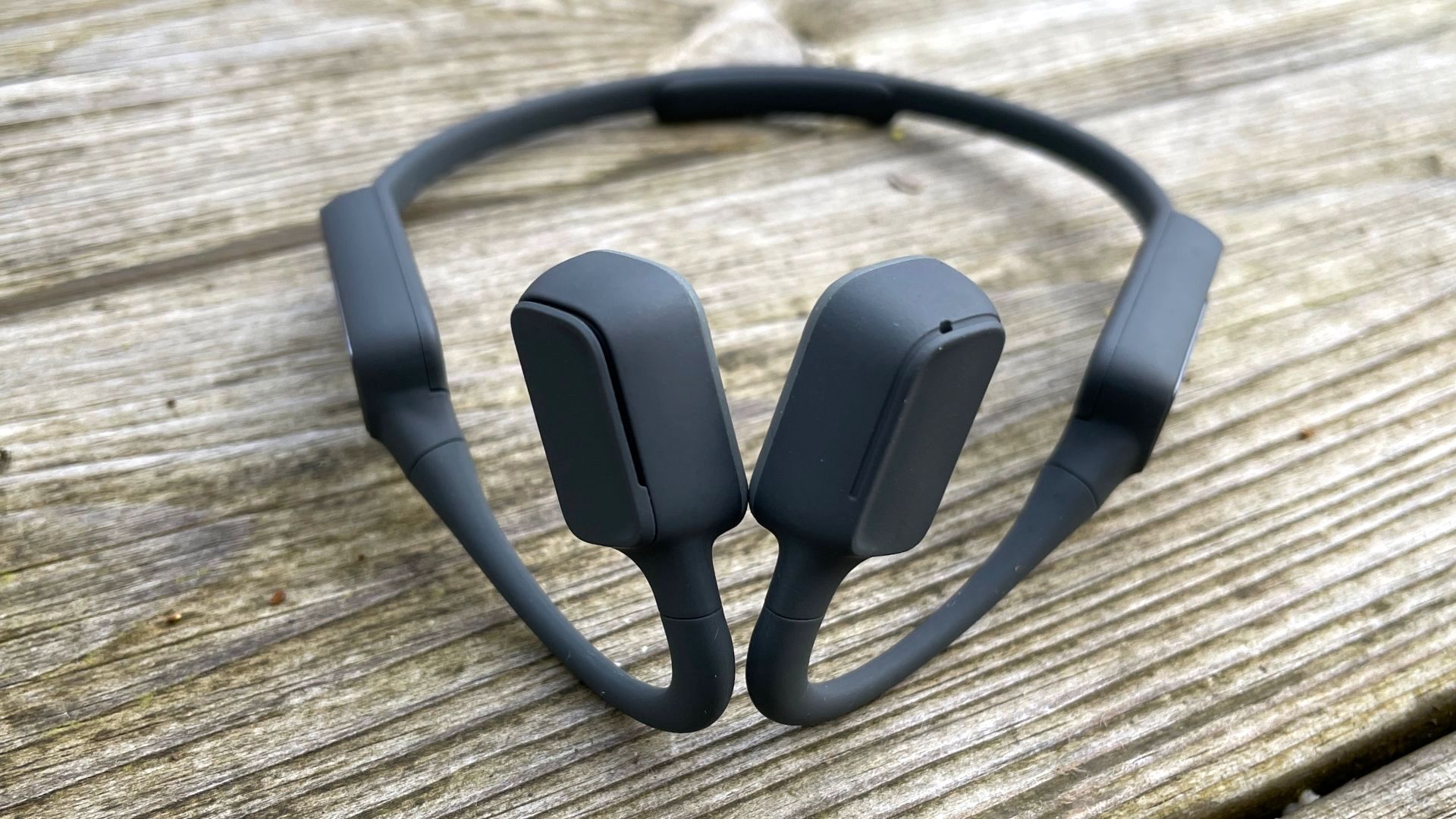
One innovation we like on the Mojo1 is a clip-on reflective strip on the rear of the neckband. It’s there to make it safer for some (primarily those with short or no hair, we suppose) to run or cycle in the dark, or at least in low light, though it’s very small. We’re also not sure why it can be clipped on and off (there are actually two in the box).
On each side of the frame are inch-long areas for the product’s small battery (left side) and battery connector point, which also houses a few buttons (right side). A range of single, double and triple presses control everything you need to, including rousing Siri or Google Assistant and accepting an incoming call. However, in practice these buttons aren’t very sensitive and often require a few presses to work, which complicates things.
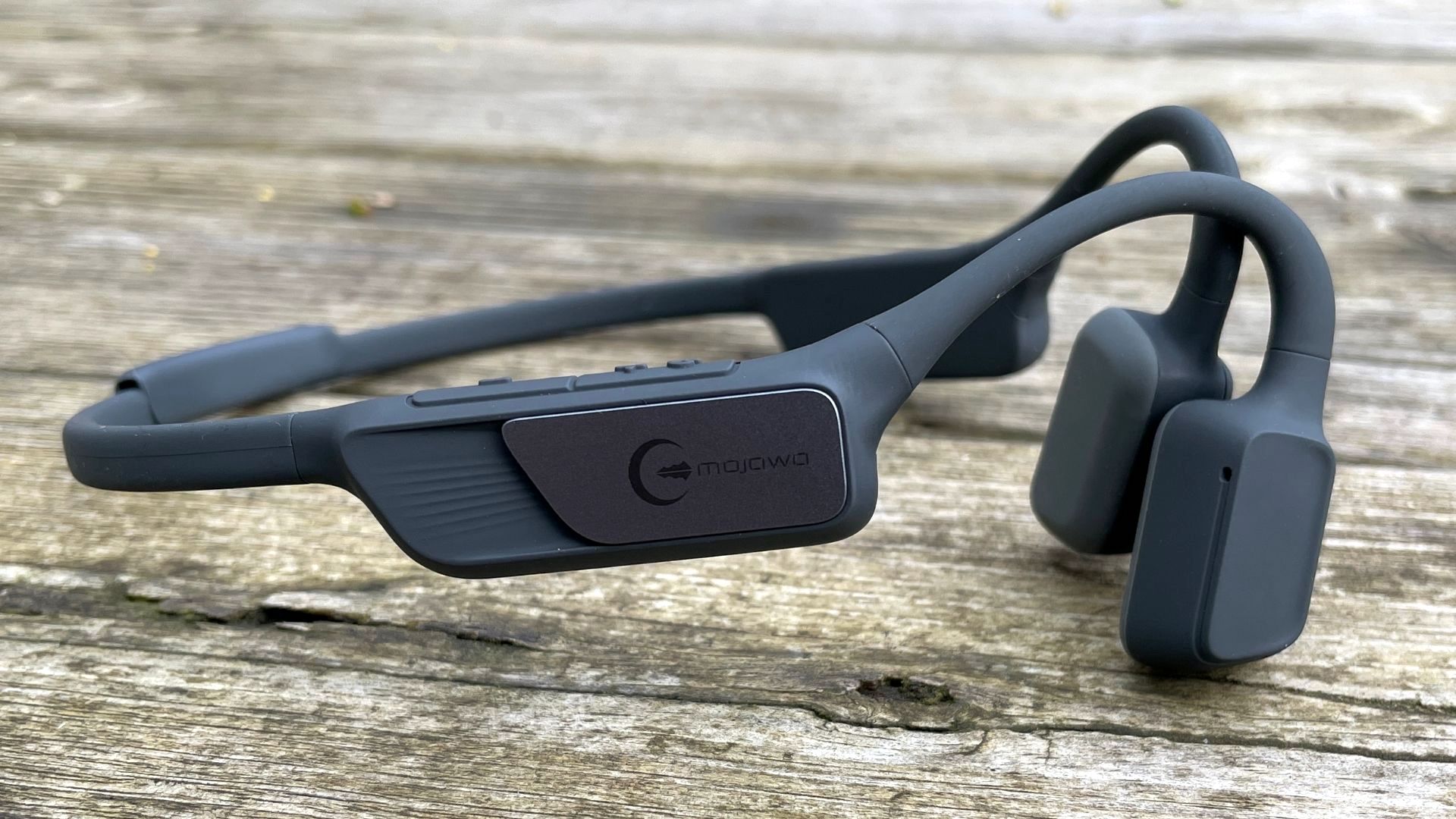
Features
- Eight-hour battery life
- Proprietary magnetic charging cable
- Pause button
The 150mAh lithium-ion battery inside the Mojo1 gives it an eight hour battery life. It takes about 80 minutes to fully recharge the Mojo1. There’s no quick-charge option, but we’re OK with that because eight hours will easily cover a week’s runs and workouts.
However, we’re not happy about how that battery is recharged. The makers of bone conduction headphones generally appear to have moved away from micro USB and USB-C recharging in favour of proprietary magnetic charging cables – the Mojo1 included. Who wants another kind of cable in their life? Particularly a rather short proprietary cable. Here it’s magnetic and links to two connector points on the headset, but the magnet could be stronger.

Like most bone conduction headsets the Mojo1 features a pause button on one of the transducers, the idea being you can easily tap it when out and about. It works fine on the Mojo1, but instead of being a small button it covers an entire transducer. We found ourselves unwittingly pausing the music every time we touched the Mojo1 to make any kind of adjustment.
Also in the box are some foam earplugs in case you want to be isolated from the world as you listen to Mojo1 sending tunes down your bones … though if that idea attracts you then you should probably be using standard earphones.
Audio performance
- Good bass levels
- Some vibration during bass-heavy music
- Transducers don’t always align perfectly for stereo
Having just tested the Shokz OpenRun, we were able to do a direct comparison between the market leader and the Mojo1. Not only does the Mojo1’s soundstage feature considerably more bass (albeit with a little tickle when the bass lines get heavy – something we also noticed on the Shokz OpenRun Pro), but there’s a more rounded sound.
However, treble detailing isn’t as good as on the Shokz OpenRun, and nor does the volume go as high. We also noticed during our testing period that the left and right earpieces – which are considerably bulkier than those found on the Shokz OpenRun – didn’t grip our head as tightly and so didn’t stay in place quite as easily. That led to an imbalance in the sound; getting perfect stereo wasn’t always possible.
First reviewed February 2022
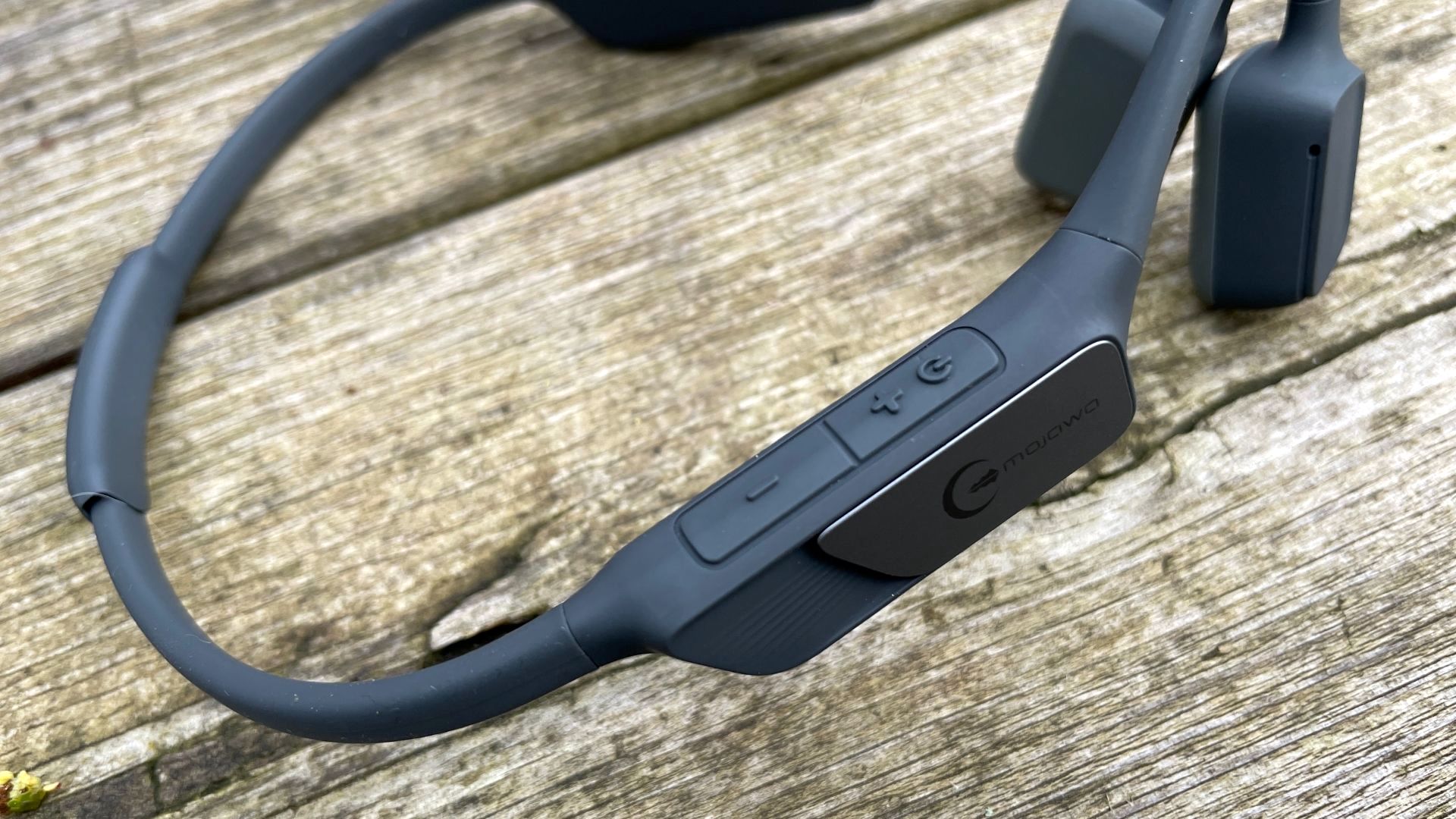
Buy it if
You must have bass
While most bone conduction headsets do really well with treble but fail with bass, the Mojo1 offers standout low-frequency sound, albeit with the occasional ‘tickle’ of vibrations in your bones that takes a bit of getting used to.
You want to be noticed
A rather clever innovation on the Mojo1 is its ‘Alula’ reflective strip that will catch and reflect the headlights of cars. That’s a useful safety feature for running and/or cycling in the dark.
You don’t want to constantly recharge a headset
The Mojo1’s 150mAh battery manages an impressive eight hours' runtime, which should get most people through a week’s worth of workouts and runs.
Don't buy it if
You don’t want another cable in your life
If you struggle with having to switch between USB-C, micro USB and Apple Lightning in your, life then get ready for something else – a magnetic connector cable! It’s the only way of refuelling the Mojo1’s internal battery.
You want a headset you won’t notice you’re wearing
The point of having a small, flexible headband is that it’s barely noticeable. However, we found during our tests that the Mojo1 didn’t exactly slip, but often the left and right side weren’t properly aligned and we had to fiddle with them more than we had hoped.
You run along a lot of roads
The Mojo1 aren’t loud enough to hear properly when running along busy roads with lots of traffic. If you’re in the park or at home you’ll have no problems, but they do slightly lack volume when you need it most. However, that’s par for the course for bone conduction headsets.
Jamie is a freelance tech, travel and space journalist based in the UK. He’s been writing regularly for Techradar since it was launched in 2008 and also writes regularly for Forbes, The Telegraph, the South China Morning Post, Sky & Telescope and the Sky At Night magazine as well as other Future titles T3, Digital Camera World, All About Space and Space.com. He also edits two of his own websites, TravGear.com and WhenIsTheNextEclipse.com that reflect his obsession with travel gear and solar eclipse travel. He is the author of A Stargazing Program For Beginners (Springer, 2015),
